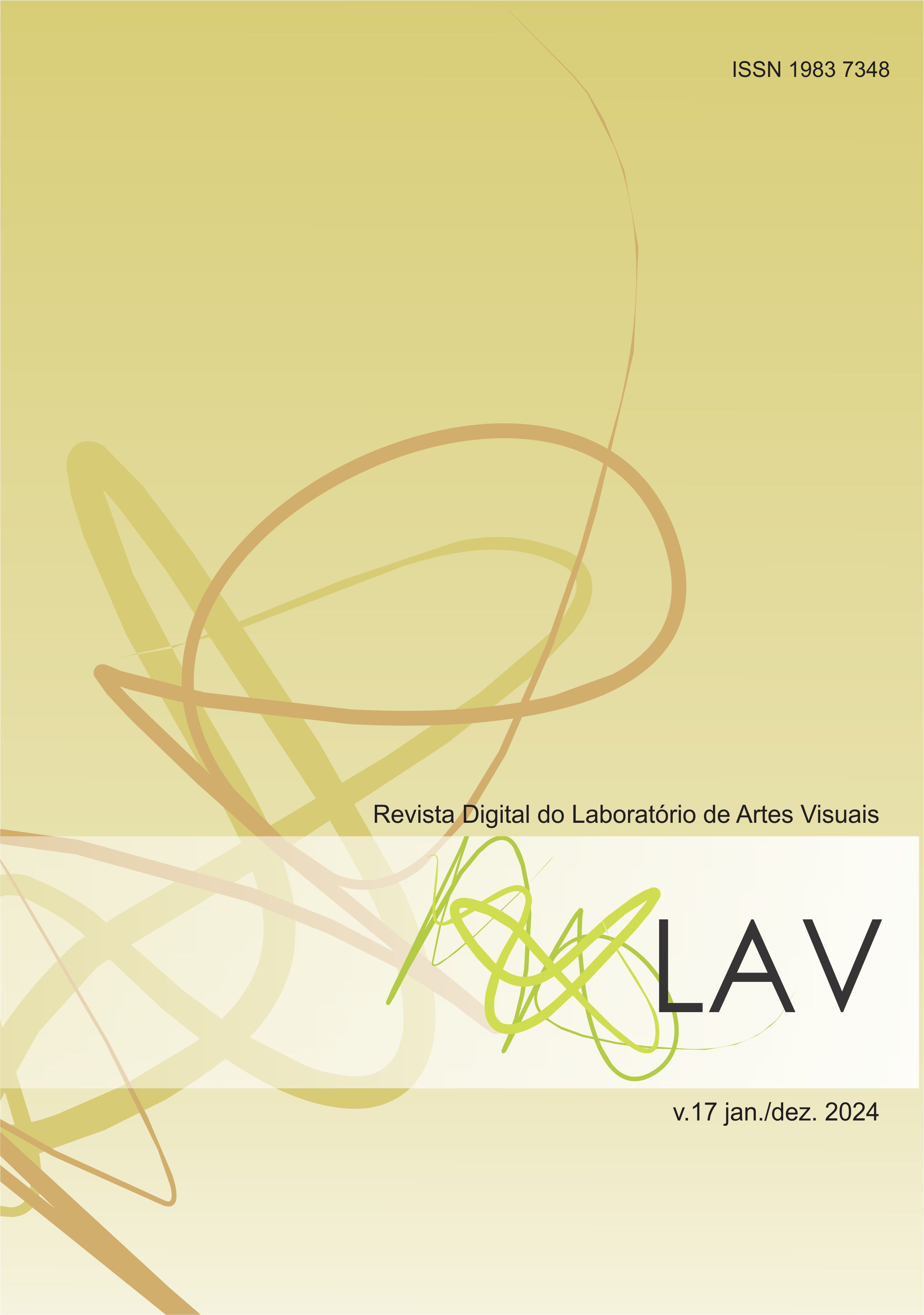Barbie ‘gets real’: cultural resonance and performativity in the movie Barbie
DOI:
https://doi.org/10.5902/1983734884637Keywords:
Barbie, Cultural resonance, Performativity; Image, Cultural pedagogyAbstract
The present text seeks to question the cultural resonance and the performative power of the Barbie doll, having as object of study the movie Barbie (2023). Among its objectives are: to weave relationships between Barbie and gender issues; to speculate on the performative power of Barbie as an image; reflect on cultural pedagogy from the affective investments in practices of using popular cultural artifacts. In the theoretical framework, there are authors of visual culture, such as Mitchell (2015) and Martins and Tourinho (2011); from philosophy, Butler (2017); from cultural studies, Giroux (2003; 1999); cultural heritage, Gonçalves (2019), and communication, Bentes (2023). The methodological approach used is bricolage (KINCHELOE, 2007) in its speculative and interpretative character, enabling the use of object descriptions, images and theoretical references from different areas such as those mentioned, to produce multidirectional and interdisciplinary analyses. The reflection reaches instigating considerations about the power and desire of the Barbie-image, the human projections on it, and suggests the development of creative and pedagogical processes based on the practices of using Barbie and other popular cultural artifacts that incite affective investments.
Downloads
References
ACASO, María. Pedagogías invisibles: el espacio del aula como discurso. Madri, Espanha: La Catarata, 2012.
BARBIE; Direção: Greta Gerwig. Intérpretes: Margot Robbie, Ryan Gosling. Roteiro: Greta Gerwig, Noah Baumbach. Produção: Mattel Films. Estados Unidos: Warner Bros, 2023.
BERTÉ, Odailso. A série Barbie “Criações Exclusivas Conrado Segreto”: o ethos cultural da moda e seus atravessamentos em processos criativos. dObra[s] – revista da Associação Brasileira de Estudos de Pesquisas em Moda, [S. l.], n. 38, p. 224–247, 2023. DOI: 10.26563/dobras.i38.1586. Disponível em: https://dobras.emnuvens.com.br/dobras/article/view/1586 . Acesso em: 24 maio. 2024. DOI: https://doi.org/10.26563/dobras.i38.1586
BEAUVOIR, Simone de. O segundo sexo. Rio de Janeiro: Nova Fronteira, 2008.
BEIGBEDER, Frédéric. Barbie. São Paulo: Cosac & Naify, 2000.
BENTES, Ivana. O que pode uma boneca? Cult, 26 jul. 2023. Disponível em: https://revistacult.uol.com.br/home/o-que-pode-uma-boneca. Acesso em: 1 ago. 2023.
BRINQUEDOS que marcam época (The Toys That Made Us). [Série documental]. Direção: Tom Stern. Desenvolvimento: Brian Volk-Weiss. Estados Unidos: Netflix, 2017. (179 min), son., color.
BUTLER, Judith. Problemas de gênero: feminismo e subversão da identidade. Rio deJaneiro: Civilização Brasileira, 2017.
CERTEAU, Michel de. A invenção do cotidiano: 1. Artes de fazer. Petrópolis, RJ: Vozes, 2012.
FRIED, Michael. Absorption and Theatricality. Chicago: Chicago University Press, 1990.
GIROUX, Henry A. Atos impuros: a prática política dos estudos culturais. Porto Alegre, RS: Artmed, 2003.
______. A cultura popular como uma pedagogia de prazer e significado: descolonizando o corpo. In: GIROUX, Henry A. Cruzando as fronteiras do discurso educacional: novas políticas em educação. Porto Alegre, RS: Artmed, 1999. p. 211-240.
GERBER, Robin. Barbie & Ruth: a história da mulher que criou a boneca mais famosa do mundo e fundou a maior empresa de brinquedos do século XX. São Paulo: Ediouro, 2009.
GONÇALVES, José Reginaldo Santos. Patrimônio, espaço público e cultura subjetiva. In: TAMASO, Izabela; GONÇALVES, Renata de Sá; VASSALLO, Simone. A antropologia na esfera pública: patrimônios culturais e museus. Brasília: Associação Brasileira de Antropologia, 2019. p. 29-48.
______. Antropologia dos objetos: coleções, museus e patrimônios. Rio de Janeiro: Iphan, 2007.
HALL, Stuart. The centrality of culture: notes on the cultural revolutions o four time. In: THOMPSON, Kenneth. Media and cultural regulation. Califórnia: Sage, 1997. p. 232.
KINCHELOE, Joe L. Pesquisa em educação: conceituando a bricolagem. Porto Alegre: Artmed, 2007.
LORD, M. G. Forever Barbie: the unauthorized biography of a real doll. Canadá: Goose Lane Editions, 2004.
MITCHELL, William. John. Thomas. O que as imagens realmente querem? In: ALLOA, Emmanuel. (Org.). Pensar a imagem. Belo Horizonte: Autêntica, 2015. p. 165-189.
______. O futuro da imagem: a estrada não trilhada por Rancière. In: MARTINS, Raimundo; TOURINHO, Irene. Culturas das imagens: desafios para a arte e para a educação. Santa Maria, RS: UFSM, 2012.
PARKS, Gary. Barbie in cyberspace. Dance Magazine, vol. LXVIII, n. 12, dez. 1994, p. 38-40. Disponível em: http://archive.thekitchen.org/wp-content/uploads/2017/10/DanceMag_Review_CafeBarbie_1994.pdf. Acesso em: 30, set., 2022.
STEINBERG, Shirley R.; KINCHELOE, Joe L. (Orgs.). Cultura infantil: a construção corporativa da infância. Rio de Janeiro: Civilização Brasileira, 2001.
STONE, Tanya Le. The good, the bad, and the Barbie: a doll’s history and her impact on us. Nova Iorque: Viking, 2010.
ROVERI, Fernanda. Barbie na educação de meninas: do rosa ao choque. São Paulo: Annablume, 2012.
TOURINHO, Irene; MARTINS, Raimundo. Circunstâncias e ingerências da cultura visual. In: MARTINS, R.; TOURINHO, I. (Org.). Educação da cultura visual: Santa Maria, RS: UFSM, 2011. p. 51-68.






